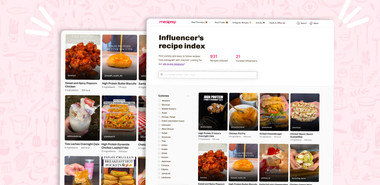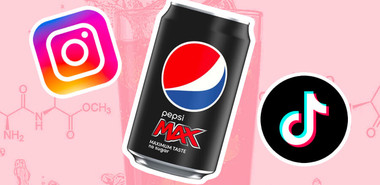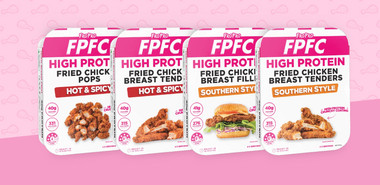| # NAME | Serving size | Sugar per 100g | Calories per 100g |
|---|---|---|---|
| 30g | 1g | 380 kcal | |
| 33g | 3.0g | 355 kcal | |
| 45g | 3.0g | 380 kcal | |
| 45g | 2.9g | 449 kcal | |
| 50g | 2.76g | 511 kcal | |
| 50g | 3.4g |
Breakfast cereals are a pantry staple. They’re convenient, affordable and an easy way to fuel up in the morning.
However, most commercially made cereals are not the healthiest breakfast option. Trying to find a breakfast cereal that isn’t packed with sugar, sodium and additives is challenging.
In this article, I’m bringing you my top 6 recommended healthy breakfast cereals for adults.
Related: 6 Healthy Breakfast Cereals for Kids
✅ Read the ingredients lists and nutrition panel
✅ Look for quality, whole food ingredients and steer clear of those that belong in a lab.
✅ Compare the nutrients by 100g not by the serve.
✅ Choose a cereal with 8-10g of sugar per 100g or less.
✅ Look for cereals with 10g or more of fibre per 100g.
✅ Consider how you can boost your cereal’s protein content with quality toppings.
6 Best Healthy Breakfast Cereals 🏆
Woolworths Rolled Traditional Oats
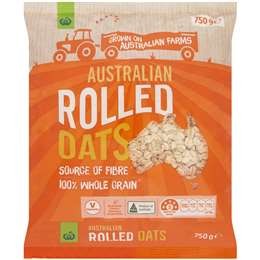
Serving size: 30g
Sugar per 100g: 1g
Fibre per 100g: 10.8g
Protein per 100g: 13.1g
Calories per 100g: 380 kcal
Ingredients: Whole Grain Oats (100%).
Rolled oats are a nutritious and filling breakfast option that can be served hot or cold. Think porridge, muesli, overnight oats or even used to bake breakfast muffins or bars. The key is to opt for rolled or steel-cut oats over quick oats as you’ll retain a higher fibre content. I also advise saving your money on the flavoured individual sachets and flavouring the oats yourself with natural spices and sweeteners.
With only one ingredient, you know what you’re eating with rolled oats and you can easily build on it with whole food ingredients to add flavour and nutrient variety. Try with nuts, seeds, cinnamon, vanilla, fresh berries, stewed apples or a dollop of yoghurt. You can add protein powder, collagen or other supplements and superfoods to boost the nutrients.
Sanitarium Weet-bix Breakfast Cereal
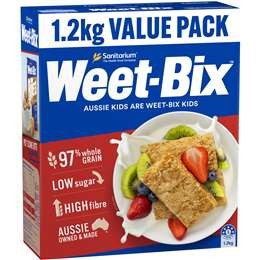
Serving size: 33g
Sugar per 100g: 3.0g
Fibre per 100g: 12.9g
Protein per 100g: 12.4g
Calories per 100g: 355 kcal
Ingredients: Wholegrain wheat(97%), raw sugar, salt, barley malt extract, vitamins (niacin, thiamin, riboflavin, folate), mineral (iron).
Sanitarium Weet-bix is a family favourite and while the addition of raw sugar and barley malt extract doesn’t make it a 5-star cereal, it is one that could be enjoyed in moderation. Being relatively plain, you can enhance the nutrient content with your toppings.
Tip: Avoid the Weet-Bix blends or bites as these tend to have much more sugar and flavours that you just don’t need in a cereal. Flavour it yourself!
Carman’s Goodness & Grains Low Sugar Almond & Coconut Flakes
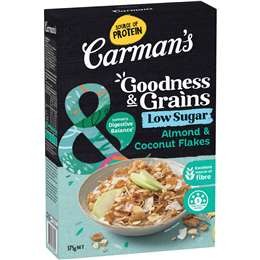
Serving size: 45g
Sugar per 100g: 3.0g
Fibre per 100g: 18.9g
Protein per 100g: 12.4g
Calories per 100g: 380 kcal
Ingredients: Bran Flakes (Whole Grain Wheat, Wheat Bran, Brown Rice, Psyllium Husks, Brown Sugar, Quinoa, Barley Malt Extract, Salt, Mineral [Iron], Vitamins [B3, B2, E]), Whole Grain Oats, Bran Straws (Wheat Bran, Wheat Flour, Salt), Sunflower Seeds, Almonds 5%, Coconut 4.5%, Natural Flavours, Sunflower Oil.
The inclusion of different whole grains in Carman’s Goodness & Grains means you get a variety of vitamins and minerals. It’s also a very tasty product and doesn’t require you to do much in the way of flavouring it.
Just be mindful, the sugars, “natural” flavours and sunflower oil make it a good occasional option not for every day.
Jordans Granola Low Sugar Almond Hazelnut
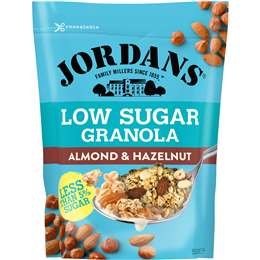
Serving size: 45g
Sugar per 100g: 2.9g
Fibre per 100g: 7.9g
Protein per 100g: 16.1g
Calories per 100g: 449 kcal
Ingredients: Whole Grain Oat Flakes (55%), Barley Flakes (19%), Chicory Root Fibre (11%), Nuts (7%) (Sliced & Whole Almonds (5%), Chopped Roasted Hazelnuts (2%)), Sunflower Oil, Seeds (1%) (Pumpkin Seeds, Sunflower Seeds), Desiccated Coconut, Natural Flavouring.
For a flavoursome cereal, Jordans Low Sugar Granola is low in sugar and has a decent amount of fibre which is great. The addition of nuts and seeds means there is also more protein than some other brands.
While there isn’t any added sugar, the natural flavour and sunflower oil aren’t ideal and should only be consumed in moderation.
Lupinola Protein-Rich Cereal – Lupin & Hemp
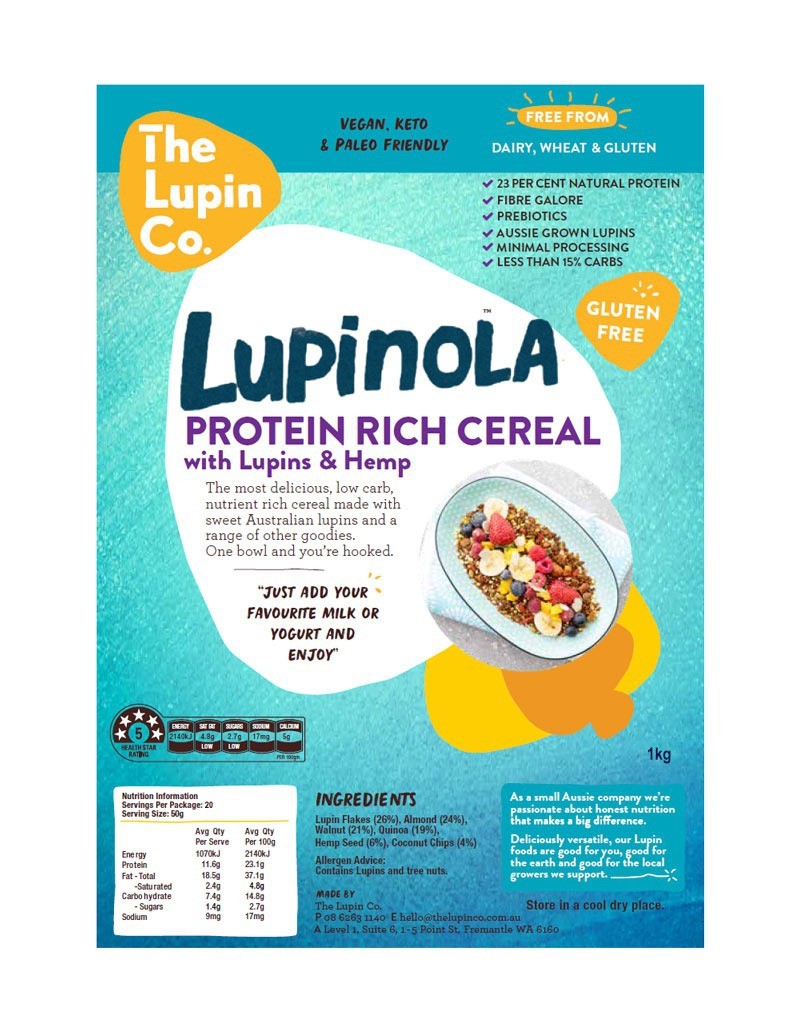
Serving size: 50g
Sugar per 100g: 2.76g
Fibre per 100g: 15g
Protein per 100g: 23g
Calories per 100g: 511 kcal
Ingredients: Lupin Flakes, Almond, Walnut, puffed Quinoa, Hemp Seeds and Coconut chips.
If you’re looking for a high protein cereal that’s low in sugar, this is it! I love the quality and minimal use of the ingredients in the Lupinola Cereal.
Lupin is a member of the legume family and is GMO-free. It has a slightly nutty flavour which is delicious as breakfast cereal and is an ideal option for those looking for wheat-free and gluten-free breakfast cereal. Lupin is also high in protein and fibre while being low GI and containing few carbs.
This cereal is found in several health food stores and smaller supermarkets. It is more expensive than some of your common brands but you’re paying for quality ingredients.
Paleo Pure Raw fruit free grain-free granola
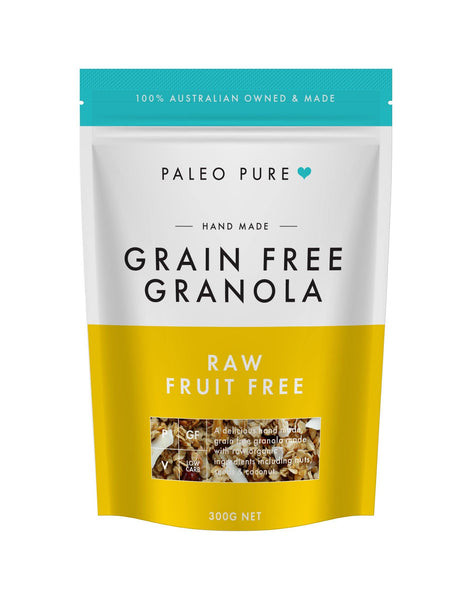
Serving size: 50g
Sugar per 100g: 3.4g
Protein per 100g: 17.4g
Calories per 100g: 616 kcal
Ingredients: Australian Organic Almonds, Organic Pepitas, Organic Sunflower seeds, Organic Shredded Coconut, Organic Coconut Flakes, Organic Coconut Oil and Ground Cinnamon.
The ingredients in the Paleo Pure granola tick all the boxes of being whole food, natural and delicious. If you’re looking for a cereal to enjoy regularly this is a good grain-free option. It is also made fresh weekly!
You’ll find breakfast very pleasurable eating this granola. You may need to order Paleo Pure granola online or you can find it in some supermarkets including Woolworth’s Metro and IGA as well as health food stores.
What Makes Cereal “Healthy”? 🤔
We all have different nutrient needs. However, as a nutritionist, there are some factors I consider when determining if a breakfast cereal is health-promoting or if it should be left on the shelf.
These include:
- The number and type of ingredients
- The sugar content per 100g
- The amount of fibre per 100g
- The protein content per 100g
- The overall calories per serve
How to Shop for Healthy Cereals
When shopping for a healthy cereal, the first thing to do:
- Ignore the marketing jargon on the front of the packaging.
Food companies get very creative at luring you into believing their product is full of goodness and a nutritious way to start your day (certainly not always the case).
Flipping over to the nutrient panel is where you can discover all the facts about the cereal.
How to Find Quality Breakfast Cereal 👉🏻
Ingredients
- Opt for a short ingredients list; long lists with unfamiliar words or numbers usually indicate a less healthy option.
- Prefer cereals with whole grains (like rolled oats, spelt, or rye) as the main ingredients, constituting at least 50% of the cereal.
- For gluten-free options, look for quinoa, buckwheat, or nuts and seeds.
- Ingredients like quinoa, almonds, and seeds add nutrition and fibre.
- Avoid additives, artificial colours, and ultra-processed ingredients.
- Be sceptical of “natural flavours” as they can be misleading.
Check Sugar Content
- Aim for cereals with less than 8-10g of sugar per 100g.
- Be aware of hidden sugars named differently, like agave syrup, cane sugar, dextrose, high-fructose corn syrup, etc.
There are 56 different names for sugar which makes navigating food labels complex and time consuming!
Fibre Content
- Choose cereals with more than 10g of fibre per 100g to maintain healthy blood sugar levels, weight management, and gut health.
- High fibre is particularly important as most Australians consume less than the recommended daily intake.
Protein Content
- Look for cereals with higher protein content, especially those containing whole grains, nuts, and seeds.
- While cereals won’t match protein levels of foods like eggs, they can still contribute to your daily intake.
Increase the protein of cereal with your toppings such as yoghurt, milk or even a protein powder if you require more.
Calorie Consideration
- Focus on calorie quality rather than just quantity.
- Aim for a breakfast calorie count of 400-450, including cereal and toppings.
- Select cereals with about 250-300 calories per serving.
- Be mindful of serving sizes to avoid overeating.
- Ingredients are listed in order of quantity, so the first few ingredients are the most prevalent.
- “Natural” doesn’t automatically mean healthy due to lack of strict regulation on this term.
- Understanding actual serving sizes can help manage portion control effectively.
Is Breakfast Cereal with a High Health Star Rating Best? ⭐️
The health star rating is a government guide to help you choose healthier food options. It’s important to know that only around 20% of packaged foods have this rating, mainly because it’s quite expensive for smaller brands to join in.
There’s a catch with this system though. It allows a product to make up for a bad point (like being high in sugar) by having a good point (like adding fibre). This means a sugary cereal could still get a high rating just by having some healthy ingredients.
A famous example is when Milo received a 4.5-star rating.
So, when you’re trying to pick a healthy cereal, don’t just rely on the health star rating. It’s better to read the nutrition label yourself or even make your own cereal. That way, you really know what you’re eating.
The Worst Cereals for Adults ❌
-
Kellogg’s Nutri-Grain 26.7% sugar
-
Kellogg’s Sultana Bran Buds 23.9% sugar
-
Uncle Toby’s Fruit Bites 23.5% sugar
-
Freedom Foods Breakfast Heroes Choc Boulders 22.4% sugar
-
Freedom Foods XO Crunch 22.2% sugar
Healthy Breakfast Cereal FAQs 💡
Is Nutri Grain cereal healthy?
Nutri Grain cereal contains vitamins and minerals but is also high in sugar and processed ingredients. It’s not the healthiest option, especially when compared to cereals with whole grains and less sugar.
Is Milo cereal healthy?
Milo cereal offers some nutrients but also has added sugar and flavourings. It’s better enjoyed as an occasional treat rather than a daily breakfast staple.
What’s the best healthy cereal for weight loss?
The best cereal for weight loss is one that’s high in fibre and protein but low in sugar, which helps you feel full and avoid snacking. Look for whole grain cereals without added sugars. I’d recommend Weet-Bix.
Is Weet-Bix actually healthy?
Weetbix is considered a healthy option as it is low in sugar, high in fiber, and fortified with essential vitamins and minerals. It’s a good base for a nutritious breakfast when topped with fruits and nuts.
The healthiest cereal for you is going to be the one you make at home, but that’s not often the most convenient option.
So remember these key takeaways when shopping for a breakfast cereal so you don’t fall into the trap of having a nutrient-poor dessert for breakfast.







